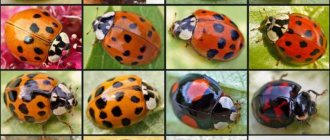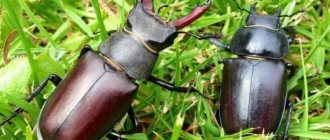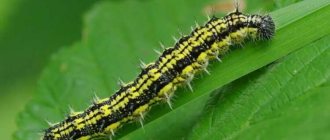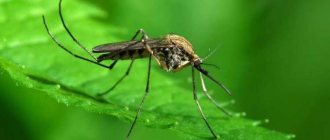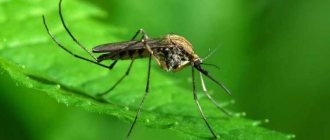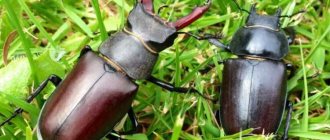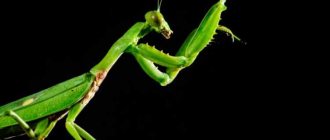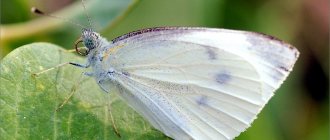Flies appeared on the planet more than 250 million years ago. During this time, paleoflies managed to develop into more than 400 thousand species and adapt to any living conditions. This two-winged insect today cannot be found only in the Arctic Circle and Antarctica. Flies occupied all food niches possible for living organisms. Some feed on the nectar of flowers, others on blood, others on decaying organic matter, and for others, fresh is good. Some previously steppe and forest species of flies quickly “realized” what benefits the development of civilization promised them and moved closer to human habitation. Once you move a couple of kilometers from your last home, these synanthropic flies stop bothering you. They are replaced by the remaining “wild” species.
Classification of flies
They still cannot systematize flies, proposing various ways to divide these insects into orders, genera, families, etc. But the ordinary inhabitant of the planet is of little interest in such methods of classification as the shape of the seam along which the pupa bursts, or the length of the whiskers of a fly. But the food habits of flies worry everyone, since the comfort of human existence depends on it. And the division of dipterans according to nutritional factor is quite clear and does not cause confusion.
According to the nature of feeding of adult flies, there are:
- nectarivores;
- aphagi;
- hematophagous;
- coprophages;
- necrophages;
- polyphages.
The second part of these words comes from the Greek phagos - “devouring” and indicates the type of food that each of the groups eats.
The food of nectarophages is the nectar of flowers, aphages do not eat at all as adults, hematophages drink blood, coprophages eat excrement, necrophages eat dead flesh, and polyphages have a very extensive food base. A striking example of a polyphage is the housefly.
On a note!
Among coprophages and hematophages, there are two types of flies: obligate and facultative. In the former, larvae and adults feed on the same food. In the second variety, the food bases of the larvae and adults are different.
Sense organs
Most of the fly's head is occupied by the eyes. Each of them consists of a large number of segments - facets. For example, a housefly has about four thousand of them. Therefore, the vision of these insects is called mosaic. Thanks to this structure, the fly instantly picks up any movements. That's why she's so hard to catch.
There is also one pair of antennae on the head. With the help of these organs, the fly orients itself in space, determines the direction of movement, and distinguishes odors even at a distance of about 500 meters.
Coprophagous
Among others, obligate flies include some species of the family of true flies that live in pastures. These insects contribute to the breakdown of excrement in nature and are difficult to classify as pests or dangerous flies. But sometimes they fly into houses, carrying worm eggs. In addition, these types of flies often settle in premises where animals are kept.
Housefly
Facultative flies are much more dangerous, since adult flies feed on excrement, but also willingly eat human food. Often these species fly in to eat directly from a dung heap. The food of the larvae is excrement.
On a note!
The most typical and widespread representative of facultative coprophages is the housefly. This is one of the most common types of flies in Russia, so adapted to life in human homes that it is practically no longer found in nature.
Appearance of a housefly
In the photo of a housefly, with macro magnification, you can clearly see all the details of the coloring. But when viewed with the naked eye, the fly looks gray.
This is a small insect with an average length of 7 mm. The color of house flies is gray with four longitudinal black stripes on the chest. The belly is yellowish on the underside. The eyes are large and dark red. The eye structure is faceted. The male differs from the female in the distance between the eyes: in females, the length of the organ of vision is equal to the distance between them; in the male, the eyes are spaced 2/3 of the way.
Nutrition
A housefly is an insect that is not capable of biting through human skin, although the female needs protein food to reproduce. This type of fly feeds only on liquid food. When finding solid pieces of organic matter, the housefly dissolves them in saliva before consuming them.
In this way she can “bite” a person. Trying to dissolve the skin with saliva, the fly causes sharp pain. An acid burn would cause similar sensations in us. But such a “bite” leaves no traces on the body.
General characteristics of the order Diptera
First, let's look at the classification of this type. Flies are insects from the order Diptera. All representatives of this systematic unit have only a front pair of membranous wings. The back one has turned into a haltere. These are small club-shaped structures that provide balance to the insect during flight. Fly wings have thickened anterior veins that move towards the front of the wing. This structural feature is called costalization.
You will be interested in: You will forget about boredom and laziness with riddles about deer
The body of Diptera consists of three parts - head, thorax and abdomen. Each of the six limbs consists of five segments. At the ends there are two claws with suction cups. Thanks to this structure, dipterans are able to move along steep surfaces.
You may be interested in: Colorless poisonous gases: list, symptoms of poisoning
Each of us watched as flies rubbed their limbs against each other. Why are they doing that? The fact is that taste buds are located on the lower part of the walking legs. With the help of such movements, insects clean the pads of their limbs from dirt.
Like all representatives of Diptera, the fly is an insect with complete metamorphosis. This means that its larvae are significantly different from adults. In flies they are white, mobile worms. In this case, the larvae do not have legs, but move with the help of special formations - hooks. After a few molts, the larva turns into a pupa. At this stage, an almost complete restructuring of the body occurs. As a result, the adult insect acquires new structural features compared to the larva. In addition to flies, representatives of the order Diptera include mosquitoes, tapeworms, hoverflies, gadflies, and horseflies.
Hematophagous
Hematophagous flies
Flies that bite are obligate hematophagous flies. This species feeds on blood in its adult stage. The larvae develop in rotting organic matter. Obligate hematophages include: horse flies, autumn flies and tsetse flies, which are often called killer flies.
Interesting!
The largest flies are called horse flies because of their thirst for blood. The female, trying to drink blood and lay eggs, does not feel danger, does not notice anything around her and often dies from the tail of an animal or the hand of a person.
In horseflies, females differ from males in that humans usually do not even see the latter. Male horseflies feed on nectar and do not attack mammals.
Some species of horse flies have green eyes, which is why they are often confused with other large flies with green eyes - aphage botflies.
All obligate hematophages have mouthparts adapted to obtain blood.
Facultative hematophages are not able to independently obtain blood from the victim’s body. They feed on secretions of the skin and mucous membranes. They willingly drink blood protruding from fresh wounds. In addition to secretions, they feed on mammal excrement and plant juices. The larvae develop in excrement.
A typical representative of a facultative hematophage is the market fly, which is very similar to the house fly, but lives only in the southern regions. Distributed throughout Central Asia and Transcaucasia. In Russia it lives in the subtropical zone.
Black lion sale wholesale
Black Lionfish for fishing and pet shops
In our own environmentally friendly and waste-free modern production, we raise large, long-lived Black Soldier larvae for fishing and the pet market.
For anglers, we can also produce larvae of the Black Soldier fly (Hermetia Illucens) of medium (for these larvae) size, red in color.
Live marketable black soldier fly larvae are very rare in stores in the Russian Federation.
And if in pet stores in large cities, such as St. Petersburg and Moscow, you can still find the treasured overseas jar, then in smaller cities, in our vast Motherland, this is already an insoluble problem.
The fishing community is 99% unaware of such a product as large, long-lived larvae of Hermetia illucens.
But the unrealized potential of the black soldier fly in the fishing market seems enormous!
Download price list for ordering products
And that's why:
● Black soldier fly larvae in the prepupa stage are simply huge compared to all other maggots that are presented today in fishing stores across the country.
Ninety percent of sales are made up of small larvae of the green carrion fly Lucilia Caesar (or its other subspecies, which are difficult to distinguish from each other even for specialists), the size of which is a maximum of 1.5 cm, and the usual size is 1.2-1.3 mm.
Fishermen, in the spring-summer season, try to purchase larger maggots for catching large fish. The largest larvae of fishing flies are the larvae of various species of the gray striped blowfly Sarcophaga, which reach a length of two centimeters or more and are several times thicker than the larvae of Lucilia. They are in very good demand during the open water season.
In addition, delicate sarcophagus larvae are demanding in terms of storage and transportation conditions, and fishing store owners try to store them together with lucilius larvae (although they have different temperature requirements), which causes damage to the goods.
At the slightest violation of the temperature regime (and the optimal storage temperature for sarcophagi larvae is +10˚C), they either simply die or pupate very quickly.
Due to these and a number of other reasons, sarcophagi larvae have not yet taken their rightful place among fishing baits, despite very flattering reviews about them from anglers who have tested them.
● Hermetia illucens larvae keep very well both at room temperatures and in the refrigerator. When storing in the refrigerator, remember that they cannot tolerate temperatures below +15˚С;
● Black soldier larvae do not pupate for a very long time. which should have a positive impact on the attitude towards them of both the owners of fishing shops and the main consumers themselves - fishermen;
● Black soldier fly larvae for fishing stores can be supplied in a variety of sizes: small, medium (up to 2 centimeters) and large size (in the prepupa stage);
● At different stages of development, the larvae of the Hermetia illucens fly have different natural colors - from the “usual” cream for the usual maggots, to the “exotic” dark in the prepupa stage;
● Black soldier fly larvae tolerate long-distance transportation very well, which will allow the distribution of these products in remote regions;
The next distribution channel for Hermetia illucens fly larvae is through pet store chains. Moreover, both the supply of the larvae themselves and the flies hatched from the pupae, which are very popular as food for various reptiles and spiders, are interesting.
Black soldier flies are weak flyers, so several flies that escape from the container can be quickly caught by hand, and this makes housewives have a positive attitude towards them. In addition, the insects themselves are very beautiful and people buy them with pleasure.
It must be said that black soldier flies are more famous among the zoo community than among the fishing community.
Lion fly larvae are a low-calorie, high-protein food, more dietary than mealworms and zoobass, with an abnormally high calcium content.
Download price list for ordering products
Necrophages
Necrophagous flies
The names of fly species can often be misleading. Such a species as the “dust fly” does not exist in nature. This name most often hides lucilia, which belongs to the group of necrophages. In the garbage dumps themselves, you can find any synanthropic species, including fruit flies. The group of necrophagous flies of the most famous flies includes:
- Lucilia (green);
- gray meat;
- blue meat
They all feed on animal carcasses, but also include food scraps, plant juices and excrement in their diet.
Interesting!
Necrophages are easy to distinguish from other dipterans: all these flies have red eyes. Some may have blood red (gray blowfly) or brick eyes (green).
Lucilia
A very common and well-known emerald green fly, capable of laying eggs on meat left unattended for a couple of minutes.
They often lay eggs in open wounds, where larvae begin to develop by eating rotting flesh. The main habitat of these dipterans near human habitation is slaughterhouses. But larvae can also develop in animal excrement. It takes 1-2 days for the larvae to develop from the egg.
Blue meat
Medium sized insect. Distributed across all continents. Like the green one, it prefers slaughterhouses and decaying meat.
Gray meat
One of the most dangerous carrion flies. Outwardly, it is similar to an ordinary indoor one, but larger and with clearly visible bright red eyes on its head. The species is viviparous. The female only needs to touch the meat with her belly to lay the larva. When emerging, the larva immediately begins to bite into the meat. The location of the larvae's penetration can be determined by the appearance of liquid from decomposing meat.
Features of development
A fly is an insect with a complete cycle of transformation, which takes place in four phases. One adult lays up to 150 eggs. Such clutches are repeated after a few days, so the total number of eggs can reach 600 eggs. They develop within a day.
The larvae are not at all similar to adult insects. These are worms without a head. They grow quickly by feeding on liquefied food. They produce it themselves by releasing digestive juices into food. This type of digestion is called extraintestinal.
After 4 days, a pupa forms from the larva. It has a hard shell called the puparium. After a certain time, this structure in the upper part bursts. This allows the adult insect to emerge. within three days the young fly lays eggs on its own. The limiting factor in this process is air temperature. When it drops below 15 degrees Celsius, the reproduction process stops.
Nectarivores
mudfly
- an insect similar to a bee, but with two yellow spots on the upper side of the abdomen. Sometimes these spots have a reddish tint.
The bee moth can cause harm to humans only if its eggs enter the gastrointestinal tract. Considering that siltworm larvae develop in pits with sewage, the likelihood of siltworm eggs getting into fresh food is very low.
Prevention
The appearance of midges can be avoided by following simple rules for cleaning the room.
Cleanliness is the key to health
Do not forget that some drugs or bleach can cause an allergic reaction in household members. If someone experiences discomfort after treating the bathroom, they should immediately ventilate the room and use another product.
Afagi
Species that do not consume any food as adults. Particularly dangerous aphages include gadflies, whose larvae feed on the soft muscle tissue of their hosts or parasitize in the intestines.
On a note!
Contrary to popular belief, the gadfly does not bite or lay eggs under the skin.
Bodfly eggs, depending on the species, are either stuck to the animal’s fur, laid on the grass, or injected into the nose and eyes. The hatched larva makes its way under the skin or into the intestines.
Reproduction
Reproduction in dipteran insects occurs sexually. There are pedogenesis (reproduction at the larval stage) and parthenogenesis (development without fertilization, males are rare or unknown).
This unit undergoes a complete transformation. Most often, representatives of Diptera lay eggs, and some species are characterized by viviparity. Then, complete or partial development of the larva occurs in the female’s reproductive tract.
Piedwings
This is a family of spotted wing flies. Most of them are small, only a few mm in length. Some species can reach 2 cm. They are harmless to humans, but cause serious damage to crops.
The list of variegated flies includes the Mediterranean fruit fly with a red belly, which is exotic for Russians. Due to its size (up to 5 mm) and similar coloration, the details of which are difficult to distinguish without a microscope, this fly can easily be confused with Drosophila.
The Mediterranean fly is not among the Russian pests, but can be imported along with citrus fruits - the main food for its larvae.
About harm and benefit
Not everyone knows that the hoverfly is not capable of biting, since it has neither a sting nor poison. Speaking about the harm and benefits of these “false” wasps, everything depends directly on their type.
On a note!
Huge. They are the best protectors of fruit trees and shrubs, destroying various harmful insects. Hoverfly larvae are also pollinators of flowering crops, which is especially necessary in mountainous areas due to the lack of bees.
Quite the opposite can be said about herbivorous hoverflies. Such flies are a source of great problems for owners of garden plots, causing damage to onions, garlic, hyacinth bulbs, daffodils, gladioli and tulips. As a result, damaged plants begin to hurt and dry out. The bulbs of flower crops suffer no less, not producing good reproduction.
Flies are the common name for insects of the suborders Brachycera Cyclorrhapha and Brachycera Orthorrhapha of the Diptera order.
The oldest specimen was found in the Republic of China. And its age is approximately 145 million years.

